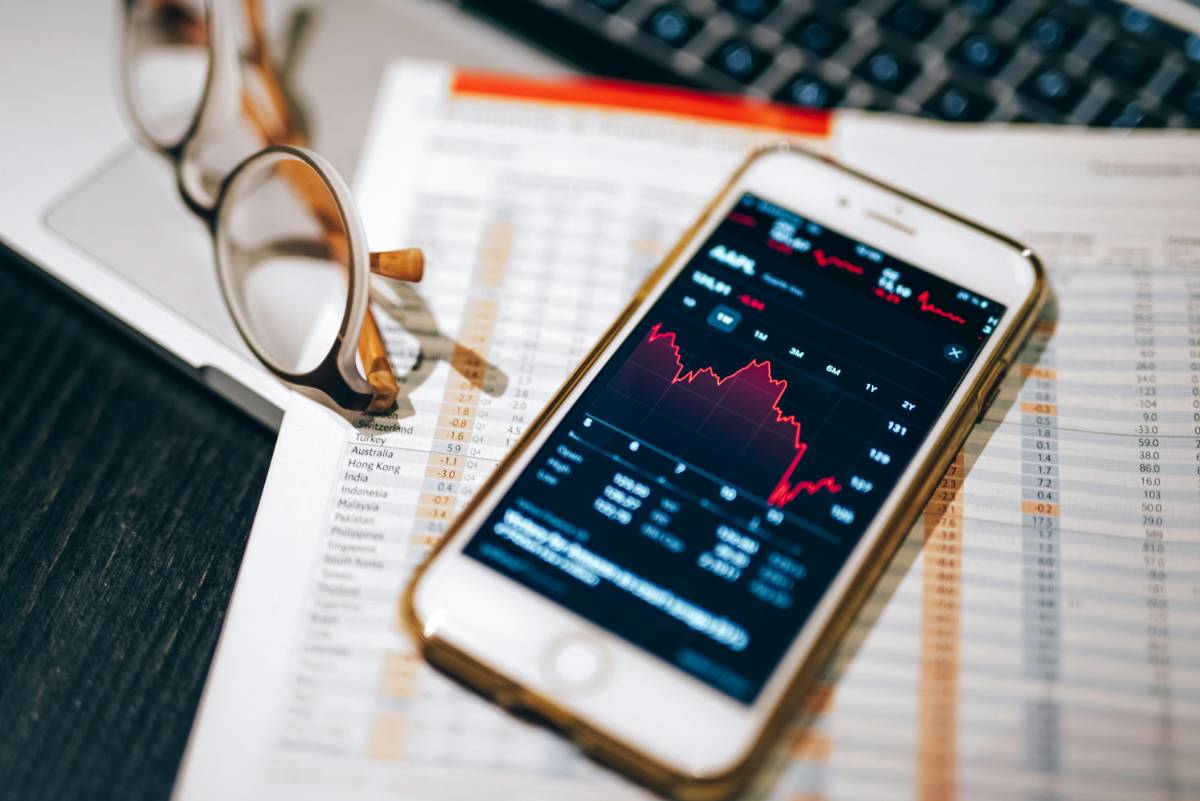
Emergency Funds: Why They’re Essential and How to Build One
 By Rahul Sharma
By Rahul SharmaAn emergency fund is a crucial aspect of financial planning, providing a safety net for unexpected situations such as medical emergencies, car repairs, or sudden job loss. Having a well-established emergency fund can reduce stress and prevent you from going into debt when life’s unexpected events occur. In this article, we’ll explore why emergency funds are essential and how you can start building one today.

Why You Need an Emergency Fund
An emergency fund serves as a financial buffer to cover unexpected expenses, ensuring that you’re not forced to rely on credit cards or loans in times of need. Here are some key reasons why having an emergency fund is important:
Financial Security: An emergency fund provides a sense of security knowing you have money set aside for unforeseen events.
Avoiding Debt: Without an emergency fund, you may resort to credit cards or loans, which can lead to high-interest debt.
Peace of Mind: Knowing you’re financially prepared for emergencies reduces stress and allows you to focus on resolving the situation rather than worrying about finances.
How Much Should You Save for an Emergency Fund?
The amount you should aim to save in your emergency fund depends on your lifestyle, expenses, and individual needs. A general rule of thumb is to save at least three to six months' worth of living expenses. However, you may need more depending on factors like job stability, family size, or the potential for medical emergencies.

Factors to consider when determining how much to save include:
Your Monthly Expenses: Calculate your essential monthly expenses, such as rent, utilities, groceries, and transportation.
Job Stability: If you work in a field with high job turnover or uncertainty, you may want to save more to account for potential unemployment.
Health Factors: If you have a family history of health issues or live in a location with high healthcare costs, you may need a larger emergency fund.
You might also like
1. Retirement Planning: Steps to Secure Your Future2. Personal Finance 101: Essential Skills for Managing Money3. How to Build Wealth: Investing for Beginners4. Personal Loan vs. Credit Card: Which is Better for Debt Consolidation?Where to Keep Your Emergency Fund
Your emergency fund should be kept in an easily accessible, low-risk account. Consider the following options for storing your emergency savings:

High-Yield Savings Accounts: These accounts offer higher interest rates than regular savings accounts, allowing your emergency fund to grow while remaining liquid.
Money Market Accounts: Money market accounts are another safe option that offers competitive interest rates and easy access to your funds.
Certificates of Deposit (CDs): Although not as liquid as savings or money market accounts, short-term CDs can offer higher interest rates for your emergency fund if you don’t need immediate access to the money.

Steps to Build Your Emergency Fund
Building an emergency fund doesn’t happen overnight, but with discipline and a strategic approach, you can steadily grow your savings. Here are the steps to get started:
Start Small: Begin by setting a realistic goal, such as saving $500 or $1,000. Once you’ve reached this initial milestone, work towards three to six months of expenses.
Automate Your Savings: Set up automatic transfers from your checking account to your emergency fund each payday. This makes saving easier and ensures you stay consistent.
Cut Back on Unnecessary Expenses: Review your budget and identify areas where you can reduce spending, such as dining out or subscription services. Use the extra money to build your emergency fund.
Use Windfalls: If you receive a tax refund, work bonus, or other unexpected income, consider putting a portion of it toward your emergency savings.
When to Use Your Emergency Fund
Your emergency fund should be reserved for true emergencies. While it may be tempting to dip into the fund for non-urgent expenses, it’s important to save it for unexpected events like:
Job Loss: If you lose your job or experience a reduction in income, your emergency fund will help you cover living expenses while you search for new work.
Medical Emergencies: Health issues can arise unexpectedly, and having an emergency fund ensures you can cover medical bills without going into debt.
Car Repairs: If your car breaks down or requires urgent repairs, your emergency fund will allow you to address the issue without relying on credit cards.
Tips for Maintaining Your Emergency Fund
Once your emergency fund is established, it’s important to maintain it. Here are some tips to ensure your fund stays intact:
Avoid Temptation: Resist the urge to use your emergency fund for non-emergencies, and make sure to only use it for its intended purpose.
Replenish After Use: If you tap into your emergency fund, make sure to replenish it as soon as possible to ensure it’s available for the next unexpected situation.
Review Your Fund Periodically: As your expenses change, review your emergency fund to ensure it’s still sufficient for your needs.
Conclusion
Building an emergency fund is an essential part of financial planning. It provides peace of mind and financial security during uncertain times. By starting small, automating your savings, and using your emergency fund responsibly, you can protect yourself from financial stress and avoid falling into debt. Whether you’re just starting or looking to grow your savings, it’s never too late to begin building your emergency fund.
About the author
 By Rahul Sharma
By Rahul SharmaRahul Sharma is a seasoned finance writer with over 8 years of experience helping millennials and Gen Z take control of their money. With a background in economics and a passion for demystifying complex financial concepts, Ananya shares actionable tips on budgeting, investing, and building long-term wealth. Her mission is to make financial literacy accessible, relatable, and empowering — no jargon, just smart money moves.
More like this

Stock Buybacks: How They Influence Share Prices
Stock buybacks have become a common strategy for companies looking to boost share prices and reward investors. Understanding their impact can help investors make informed decisions.

Meme Stocks: Are They Making a Comeback?
Meme stocks took the financial world by storm in recent years, driven by online communities and retail investors. As market conditions shift, many wonder if these stocks are making a comeback.

Dividend Stocks vs. Growth Stocks: Where’s the Best Opportunity?
Investors often face a crucial decision when building their portfolios: Should they invest in dividend stocks for stability or growth stocks for higher returns? Understanding the differences can help in making the right choice based on financial goals and risk tolerance.

How Geopolitical Events Affect U.S. Stock Performance
Geopolitical events have a significant impact on the U.S. stock market, influencing investor sentiment, market volatility, and sector performance. Understanding these effects can help investors navigate uncertainty and make informed decisions.

AI and Automation: The Next Big Disruptors in the Stock Market
Artificial intelligence and automation are transforming industries, and the stock market is no exception. These technologies are reshaping investment strategies, trading mechanisms, and market dynamics at an unprecedented pace.

S&P 500 vs. Nasdaq: Where Should You Invest?
Investors often compare the S&P 500 and the Nasdaq when deciding where to allocate their funds. Understanding the differences between these indices can help you make a strategic investment choice based on your risk tolerance and financial goals.

Why Tech Stocks Are Leading the Market Again
Tech stocks are once again at the forefront of the market, driven by innovation, strong earnings, and investor optimism. As companies in the sector continue to expand their influence, understanding the reasons behind this surge can help investors make informed decisions.

The Impact of Federal Reserve Policies on the Stock Market
Federal Reserve policies play a crucial role in shaping the stock market. Interest rate decisions, quantitative easing, and regulatory measures directly impact investor sentiment and market performance. Understanding these effects can help traders and long-term investors navigate the evolving financial landscape.

Top Performing Stocks on Wall Street This Quarter
The latest quarter on Wall Street has seen significant movements, with some stocks outperforming expectations while others struggled to keep up. Understanding these trends can help investors make informed decisions moving forward.

U.S. Stock Market Outlook: What to Expect in 2025
As we move into 2025, investors are looking for insights into the U.S. stock market's potential trajectory. Market trends, economic policies, and global events will all play crucial roles in shaping investment opportunities.




